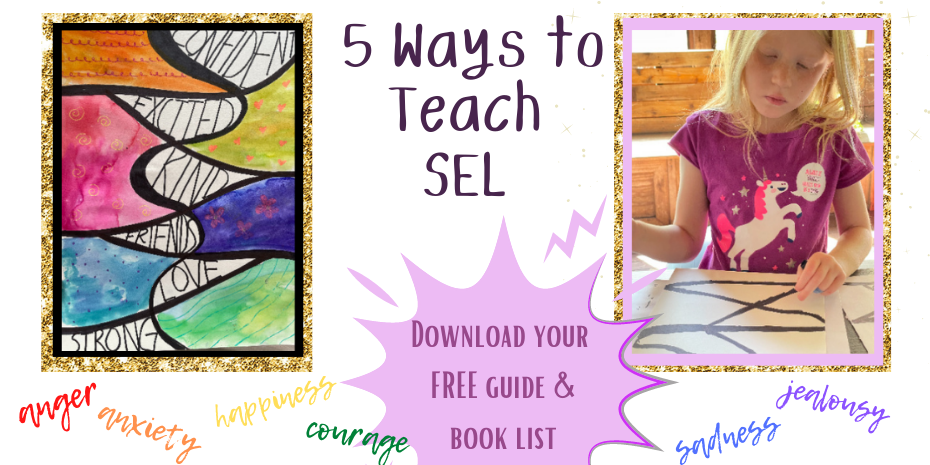SEL is one of the newer acronyms you’ll hear in education, but what exactly is it and how do you teach SEL in the art room?
The acronym stands for social-emotional learning – basically a great deal of the learning that really can’t be found in a textbook.
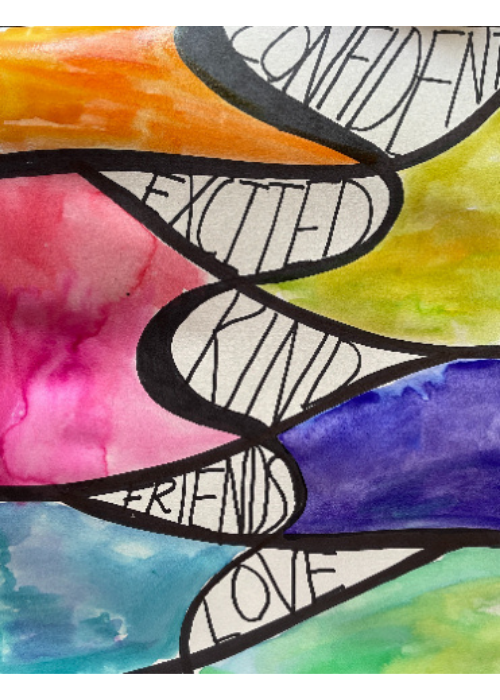
How to manage emotions and navigate peer relationships is at the heart of it. But what can that mean in the art room – or in a homeschool art setting?
Do any of these sound familiar?
- A child says “I’m not a good artist” because they are afraid of trying
- A friend, sibling, or peer says something about a child’s artwork, and that child gives up art forever
- A child draws a line over and over, demanding at least 50 sheets of paper because their line isn’t right
- After art class, a child is bullied by another peer
- A child leaves art to go onto the playground where they watch their friend being bullied
- A friend, sibling, or another student’s work “looks better than mine”
- A child doesn’t want to do the project and crosses arms, or throws art supplies
And here’s the scarier thing – the average adult only recognizes about 5 emotions. If we have trouble categorizing how we feel ourselves, imagine how a child feels.
So what can we do? Here’s 5 ideas to bring social-emotional learning into art time.
Color Monsters
The Color Monster by Anna Llenas is a huge favorite for teaching kids about emotions. And even more fun, kids can create their own color monster!
Start by choosing a color and scribbling up and down on the paper using all of the shades of that color (color theory and social-emotional learning!).
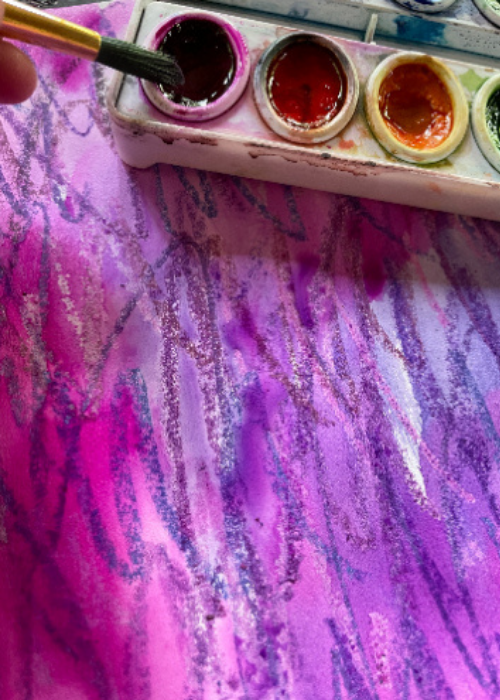
Next, paint over it with the same colored watercolor and let dry.
Finally, have kids design their monster, using facial expressions and body language.
If they can’t figure out the face or body language, have them ask a friend or sibling to mimic the emotion first if they need help.
When it’s designed, cut it out, and glue it on a piece of white paper. Let them decorate the background if they’d like, and have them label the emotion.
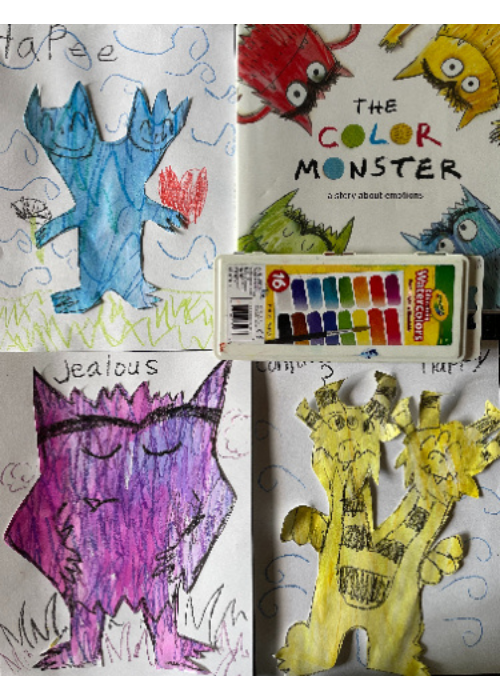
Remember – kids don’t have to create a monster just like the one in the book. With crayons and watercolors they can think about the emotion that they feel the most often – and what color their monster would be, and create a monster of their very own.
Don’t be surprised if their happy monster turns out blue, because blue is their happy!
A line of emotions
Linking art to emotions can be as simple as a line.
Use 4 piece of paper, or a piece of paper divided into 4 rectangles.
Start with the emotion: worry. Have students choose a color of crayon or marker, and without taking the crayon or marker off the page, draw what a worried line would look like or do.
Now choose sadness. Have them select a different color of crayon or marker if they’d like to, and starting on the left side of the page, have them think about what a sad line would look like.
Next, switch to angry. Again, let students choose a different color if they’d like to. How does their line feel? What is it doing?
Finally, choose happy. Switch colors one final time.
When students are finished with their lines, ask them a few questions:
- Did you choose different colors to represent the emotions? Why?
- What did your angry line do? Did you press harder with the crayon or marker?
- Compare the sad line with the happy line. How are they different?
- Do you think that someone would be able to tell which line goes with each emotion? Why?
- Can we tell how an artist was feeling when we look at the lines in their art?
Flip a piece of paper over and have students choose one final emotion of their choice, choosing the color and line.
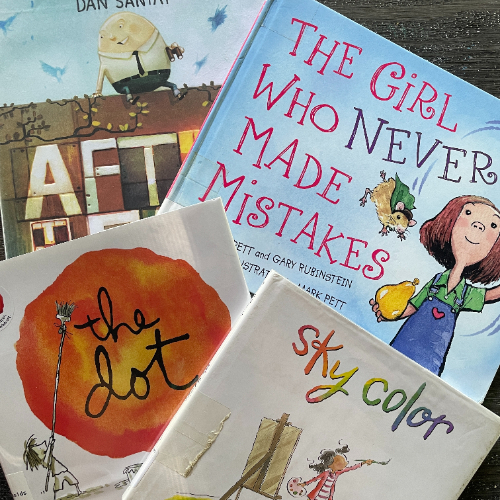
Growing your mindset – for adults
How many adults do you know who say “I can’t even draw a stick figure”? Maybe you’ve caught yourself saying the same thing on occasion. Or those dreaded two words – “I can’t.”
We don’t like hearing kids say it. I can’t draw this line. I can’t paint. I can’t create that pattern. I can’t think of anything.
And yet – yikes. We say it ourselves.
I can’t kayak – I would tip the boat. I can’t draw a flower. I can’t do this tech thing. I can’t sing.
Who says so?
We do it to ourselves – that niggling voice inside us who is afraid of being judged. Especially when someone else is watching.
One of the best ways we can help kids with their own social-emotional learning is by modeling. How do we act when we make a mistake drawing a line? Do we immediately rip up that paper? Do we reach for another piece? Or do we talk out loud about how we don’t like our line, and talk about what we can do to fix it?
If you want to have fun with drama, try telling kids that you need to pull the sample off the wall and stomp on it and throw it away because it isn’t any good. And then watch the look on kids’ faces. When they stop you, ask them what they would do to fix it? It’s a gentle way of modeling brainstorming an artistic problem – when it isn’t their own personal artwork.
There are also a number of books that are wonderful reads such as The Girl Who Never Made Mistakes by Gary Rubenstein.
Scroll down and click the banner to get a book list of suggested reads.
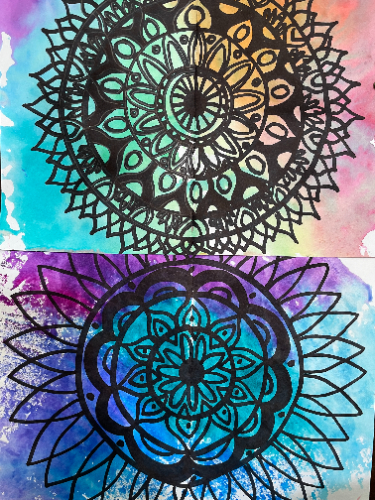
Me too…
Even as adults we tend to think we’re alone and that no one shares our fears and worries. So you can imagine how kids may feel.
At the beginning of the year, have students write down on a small piece of paper one thing that they are worried about and not put their name on the paper. Collect all the papers.
Choose half of them to read aloud and address a few of their concerns.
Talk about how you have multiple pieces of paper with the same worry and what that might mean.
All about me
Have students brainstorm how they would describe themselves, and then who they would like to be.
Are they strong? Kind? Do they wish to be brave?
Maybe they feel one way at the bottom and where they’d like to feel is at the top.
Using a marker, kids can draw a zig zag across the page, and then a wavy line going up. The result is a fun ladder design with sections that kids can use to write the words that they feel represent them, or how they are feeling, depending on how you wish to teach it. They can even write in the names of those who they feel support them and love them – friends, family, teachers, and other loved ones.
Watercolors and crayons or gel pens can be used to decorate around the piece. Although simple, one result of this project is the calmness that flows over the room as they think about their words, and choose a design for each section. You can also use markers or crayons, making it perfect for art-on-a-cart or remote learning.
Click the banner at the bottom to download the instructions for this project AND a booklist.
Teach SEL in the art room with this free project AND booklist!
Click the banner below to download the full instructions for teaching the ladder to kindness, a summary of the other ideas in this post, and a booklist full of easy-to-find books that kids will relate to.
If your students create a ladder of kindness – please make sure to tag us at @soulsparklettesart so we can celebrate them – and you – for taking the time to truly inspire and help kids.
The doors to our Glitterbombers Membership is closed – but waitlist members are notified of flash enrollments (including one coming up in September). Make sure you’re on the waitlist to find out when we open right here.
